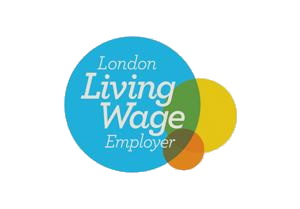With no fanfare or cheering crowds, and relatively little attention, Sir Keir Starmer was elected the Labour Party’s 19th leader* two years ago. COVID-19 cast shadows over his vision, achievement and personality, and Starmer trod the most difficult of lines for an Opposition leader – offering criticism of the Government at a time when the public needed unity. But has he broken out of this straightjacket? With Labour now leading in the polls, is this an anti-Conservative trend, or a pro-Starmer one? Have his reforms led the public to the conclusion that Labour is electable again?
A reforming leadership of highs and lows
2021 was tough for Starmer. He oversaw big Labour losses in local elections. He was credited with the Party’s terrible result in Hartlepool, and its poor performance in Batley & Spen. His leadership coincided with the Green Party reaching historic levels of sustained support (at some points reaching 10% and above). The Labour leader has however made significant internal reforms.
Starmer took bold action in expelling Corbynistas from the shadow cabinet and Jeremy Corbyn from Labour – part of his drive to “tear out the poison” of anti-Semitism from the party. It remains to be seen what impact this will have in the long-term, but as short-term perception management goes, this is certainly a step in the right direction. Starmer is aware that he needs to broaden Labour’s electoral coalition, so will have been pleased to see that whilst 41% of Labour voters thought Corbyn’s expulsion was the ‘right thing to do’, 58% of all British voters shared this view.
Starmer’s reforms did not stop there. His professional management style of leadership has committed Labour to not proposing policies that aren’t ‘serious’. He has, however, promised to invest more in mental health and education, and to spend £6bn a year on upgrading insulation in 19m homes. These modest proposals are steps towards regaining public trust.
Yet, other Labour Shadow Ministers have been silent. Shadow Education Secretary, Kate Green MP, reported being told “your job is not to generate policy, it’s to get out there and attack the Tories.” Likewise, Bridget Phillipson MP claimed that Labour needs to “make its own echo chamber larger” and “reach people who don’t already vote for us […] rather than discuss our politics with people who do.” From this perspective, it is clear Starmer is aware of the hill he must climb. The route back to power comes in two stages – first, becoming the anti-Tory/Boris choice for voters, and then offering a positive pro-Labour/Starmer option.
Ambivalence may be Starmer's friend
The Prime Minister’s approval ratings are underwater, and Starmer is not performing well for a Leader of the Opposition – his numbers are better than Johnson’s, but worse than Corbyn’s. Feelings of ambivalence about Starmer have reached 42% in some polls, with most voters not knowing what he stands for, or who he is. Remaining relatively mute on policy means he has more time to refine his image and platform, and convert those who have ‘no opinion’ of him into advocates. Being an ‘unknown’ may be a drain in the short-term, but may prove beneficial in the long-term – when Tony Blair was elected leader three years before the 1997 Labour landslide, he was referred to as ‘Bambi’ given his initial lack of political stardust.
This grey, lawyerly man recognises that his party’s route back to power comes not only in the former ‘Red Wall’, but in places across the country Labour needs to win for the first time in decades. His reliance on focus groups and think tank gurus such as Deborah Mattinson can only get him so far in this regard. Ed Miliband became a prisoner of focus groups when he was leader, and Starmer’s overuse may be harmful. Think tanks aren’t always the most representative samples of opinion – their usage must be treated with caution.
New Labour 2.0?
Wycombe (where Labour have been eating into the Conservative majority since 2015), Worthing (where Labour gained council seats in 2021), Truro, and Chingford (two of just 12 seats where Labour increased their vote share in 2019) are examples of areas the party needs to gain new voters, rather than relying on historic supporters, as is the case across the Red Wall. Starmer’s re-positioning of the party back towards the centre is important, and representative of his intention to regain the trust of working class voters not just in the north and middle class voters in the south.
Starmer is mirroring New Labour’s pro-enterprise platform by promising to scrap business rates, and ruling out the nationalisation of energy firms. Tony Danker of the CBI stated “Labour should be applauded for putting forward a pro-growth, pro-investment package of reforms”, whilst the Chair of the Federation of Small Businesses commented that it was right to propose such changes.
Starmer has a bumpy road ahead of him. He knows his party cannot risk another hard-left leader, evidenced by his attempt to change the rules on how leaders are elected last year, yet seems to be orchestrating a turnabout akin to New Labour’s in the mid-1990s, but with less charisma and a more methodical approach. Kier’s two years have involved considerable damage control, and attempts to position Labour as the anti-Tory/Boris choice. Is now the time for stage two in the Party’s journey back to power? The key decision for Starmer will be when to change tack.
*Not including acting leaders




